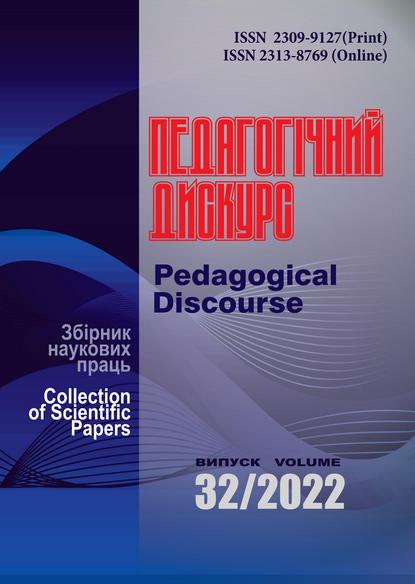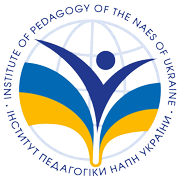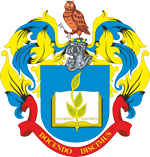Using of Multimedia Technologies in the Context of Blended Learning while Teaching a Foreign Language in High School
Abstract
The article investigates the use of multimedia technologies in the context of blended learning during foreign language teaching in higher education. The transition to distance learning, due to the pandemic and wartime, has become a serious challenge for all participants in the learning process. The issue of distance education development has become very important. And although distance education is not a substitute for full-time learning and was never planned for the long term, it can be an effective tool not only during quarantine and wartime. In such circumstances, we have to accept this challenge and quickly adapt to new realities.
The article presents a concise classification of electronic applications and interactive teaching aids that are convenient to display on the screen of a smartphone, a personal computer or a multimedia board. Particular attention is paid to the use of some of them during distance learning of a foreign language in a professional field.
The article investigates the impact of internet and mobile applications on enhancing students’ language skills. It examines the students’ opinion regarding English online learning using various Internet resources.
Teaching a foreign language with the using of multimedia technologies makes it possible to move from passive learning to an active form of educational activities, in which the student becomes an active participant. Thus, by increasing the clarity of the material activates the learning process, there is a more productive interaction.
Downloads
References
Boliubash, N. M. (2019). Formuvannia pedahohichnoi kompetentnosti mahistriv IT-spetsialnostei zasobamy osvitnikh informatsiinykh tekhnolohii [Formation of Pedagogical Competence of Masters of IT Specialties by Means of Educational Information Technologies]. Informatsiini tekhnolohii i zasoby navchannia – Information Technologies and Teaching Tools, 71 (3), 70–91. [in Ukrainian].
Matseiko, O. V. (2021). Teoretychni osnovy vykorystannia informatsiino-komunikatsiinykh tekhnolohii u profesiino-tekhnichnii osviti [Theoretical Foundations of the Use of Information and Communication Technologies in Vocational Education]. Suchasni informatsiini tekhnolohii ta innovatsiini metodyky navchannia v pidhotovtsi fakhivtsiv: metodolohiia, teoriia, dosvid, problemy – Modern Information Technologies and Innovative Teaching Methods in the Training of Specialists: Methodology, Theory, Experience, Problems, 32, 184–189. [in Ukrainian].
Smyrnova-Trybulska, Ye. M. (2007). Dystantsiine navchannia z vykorystanniam Moodle – Distance Learning Using Moodle. Kherson. [in Ukrainian].
Rashevska, N. V. (2012). Tekhnolohii mobilnoho navchannia [Mobile Learning Technologies]. Pedahohika vyshchoi ta serednoi shkoly – Higher and Secondary School Pedagogy, 35, 295–301. [in Ukrainian].
Shunevych, B. I. (2013). Populiaryzatsiia dystantsiinoho navchannia v osvitnikh zakladakh Ukrainy [Popularization of Distance Learning in Educational Institutions of Ukraine]. Visnyk Lvivskoho derzhavnoho universytetu bezpeky zhyttiediialnosti – Bulletin of the Lviv State University of Life Safety, 7, 299–303. [in Ukrainian].
Collis, B., & Moonen, J. (2001). Flexible learning in a digital world: experiences and expectations. London: Kogan Page Limited. [in English].
Mc Gee, P., & Reis, A. (2012). Blended Course Design: A Synthesis of Best Practices. Journal of Asynchronous Learning Networks, 16 (4), 7–22. [in English].
Copyright (c) 2022 Pedagogical Discourse

This work is licensed under a Creative Commons Attribution-NonCommercial-ShareAlike 4.0 International License.

















